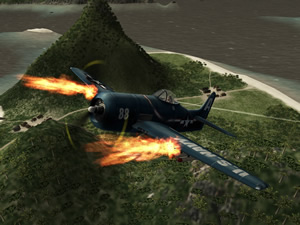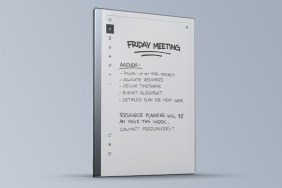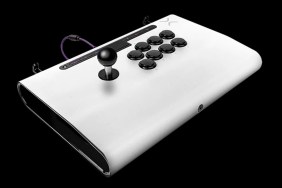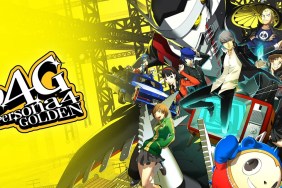Plane and simple.
You know how right before some self-important documentary on the history of aviation, some leathery-voiced old gruff says: “Since the dawn of time, man has always dreamed of flight?” It’s true, but an equal number of us have also dreamed of dying in a horrible plane crash. When one is dangling fifty-thousand feet over the ocean crowded in a flimsy tube with hundreds of other clueless people, the laws of physics, air pressure, velocity and momentum seem sadly insufficient. What the hell holds a plane up? Don’t tell me air, because I live in air, and it’s weaker than a Shirley Temple in Utah.
Curiously enough, playing hours of Ubisoft’s WWII flight sim Heroes of the Pacific did not cure me of my fear of flying or instill any new fears of the Japanese. We already know who wins the war, and there’s no big fourth-quarter comeback this time, either.
That might serve as a kind of analogy to the experience of the game itself. Unsurprising, easy, and just a little less dull than a History Channel documentary, Heroes of the Pacific retraces the formulaic steps of the traditional mission-based flight game. Chances are, if you’ve played any combat flight sims before, you already know what’s coming. Pearl Harbor just ain’t a surprise twice.
The story is equally predictable. In the game’s main campaign mode, you take on the identity of Stanley Crowe, a Navy fighter pilot who loses his brother during the attack on Pear Harbor and vows to take revenge on the Japanese. Between missions and cheesy WWII stock footage, a forgettable tale of revenge and redemption unfolds. Crowe wants blood and blows up hordes of Japanese planes and ships to prove it, leaving a trail of wreckage from Hawaii to Iwo Jima.
So many planes and ships, in fact, that he should receive the Congressional Medal of Genocide. When several of the missions require that you “shoot down” one hundred Japanese planes in a few minutes, you get the sense that Crowe should be considered a weapon of mass destruction in and of himself.
The action errs on the side of arcade shooting over flight simulator flying, a wise move for the console crowd. The game offers two styles of control: Arcade and Professional. Arcade mode does not let your plane roll over and generally keeps it flying level, while in Professional mode your plane has no artificial guides and will roll and spin all over the place, often into the ground. The option is nice, though the action is more about shooting and less about flying.
Your choice of planes is small at the beginning, but swells to huge numbers by the end of the game. Planes fall into one of four types: fighter, bomber, dive bomber, and torpedo bomber. While fighters are the most versatile, many missions require some kind of bombing. Unfortunately, most of the cooler planes are either Japanese or German and are unavailable in the single-player U.S. campaign.
Most of the gameplay focuses on the art of leading your target with machine gun fire. By aiming in front of the little dark blip on the screen that is your enemy, your cursor will flash red. Let loose with the magical machine gun and you’ll chalk up another kill. Why magical? Because it never runs out of bullets (or, presumably, hatred for the Japanese.)
 You won’t run out of bombs either, though these take a few seconds to reload. The bombing mechanic requires you to toggle from the regular third-person view to a special “bombardier’s view,” which brings up crosshairs that travel along the ground in front of you. Drop the bombs when the crosshairs line up over the helpful cursor and voila.
You won’t run out of bombs either, though these take a few seconds to reload. The bombing mechanic requires you to toggle from the regular third-person view to a special “bombardier’s view,” which brings up crosshairs that travel along the ground in front of you. Drop the bombs when the crosshairs line up over the helpful cursor and voila.
Although there is nothing very special about this, it at least breaks up the monotony of downing things with your magic gun. The action can sometimes get pretty hairy, especially when you’ve got to intercept bombers coming from opposite directions or you need to protect your ground troops from hundreds of tanks and snipers. The missions can be exciting at first, but after increased repetition lose their polish and sheen. The magic just doesn’t last.
But your plane sure will. It never runs out of fuel, can absorb a surprising number of bullets, and actually self-lands. These aids push the game off the danger zone highway and into a much comfier zone, making the whole game both accessible and maybe a little too easy, especially if your last name is Iceman.
Other than the campaign, you can try your hand at quick Instant Action games or Historical Missions. But regardless of the mode, the game is something of a propaganda machine as the dialogue is rife with derogatory terms like “jap” and “tojo.” Some earnest, flag-waving fortunate son might insist that “that’s the way they really spoke back then.” Yeah, and planes landed themselves and never ran out of bullets. I would also expect that the airmen talked with relish about things other than killing Japanese, and probably using language that would prohibit the game from its Teen rating. I’m not saying the game is racist, I’m just saying that calling the enemy “darned japs” all the time manages to be both prudish and crude at the same time.
But while the era-specific dialogue seems unnaturally anachronistic, the war-movie menu scheme is the game’s most impressive feature. Menus are stylized to evoke the unbridled patriotism of 1950’s movie advertisements, full of smiling sergeants and shouting headlines. Aesthetically, the game’s front end is right on.
 This doesn’t always extend to the in-game graphics. The planes are rendered nicely, gleaming in sunlight and shadowy in the distance, but since most of the game is spent shooting down cursors, the detail is usually reduced to a single dark blip moving slowly across your screen. Clouds, sky, ocean, and the occasional island make up the rest of the environment. When you do come across land, it’s generally featureless. Not particularly thrilling stuff.
This doesn’t always extend to the in-game graphics. The planes are rendered nicely, gleaming in sunlight and shadowy in the distance, but since most of the game is spent shooting down cursors, the detail is usually reduced to a single dark blip moving slowly across your screen. Clouds, sky, ocean, and the occasional island make up the rest of the environment. When you do come across land, it’s generally featureless. Not particularly thrilling stuff.
The sense of speed never quite takes a grip, either. The screen shakes as you fly through flak, but otherwise the flying is almost unnaturally smooth, kind of like driving on a perfectly flat surface. You occasionally feel it during nose dives as the throttle whines, but without much context besides ocean and sky, it sometimes doesn’t feel like you are moving at all. The exception to this is the “warpspeed” function, a turbo boost that effectively hurtles you into the fray. It’s a nice touch, but it doesn’t add much besides a shorter travel time.
The orchestral soundtrack is properly martial, matching the mood of the game fairly well. A decent dose of appropriate gunfire sound effects does the trick, though those tend to get drowned out under the angry voice-acting.
Differences between the Xbox and the PS2 versions are minimal. The PS2 actually looks a little clearer, but also suffers from some framerate difficulties when there’s a lot going on. Load times for the PS2 also drag quite a bit, making you taxi around the concourse a few times before taking off.
Taking the game online isn’t a smooth liftoff, either. The options are thin, offering Deathmatch, Team Deathmatch, Capture The Flag, and a game in which you must sink the other team’s carrier. That one is probably the best since it takes advantage of the various bomber planes. However, the battles are never very spectacular and the only planes available are the ones available to the host. That means that if the host of the game has only unlocked a couple lame planes, you will be forced to fly their cheap-ass rides.
Speaking of which, a rental might be in order for WWII freaks or flight game junkies, but my guess is that Heroes of the Pacific is not historically accurate enough for the first group and too arcade-oriented for the latter. While solid in its presentation and adequate in its basic gameplay, it’s little more than another individually-wrapped snack in the great and majestic adventure of human flight.
-
Lots of combat
-
Lots of planes
-
Decent gameplay
-
Like lots of other games
-
Monotonous
-
Uncomfortable dialogue
-
Mediocre multiplayer











